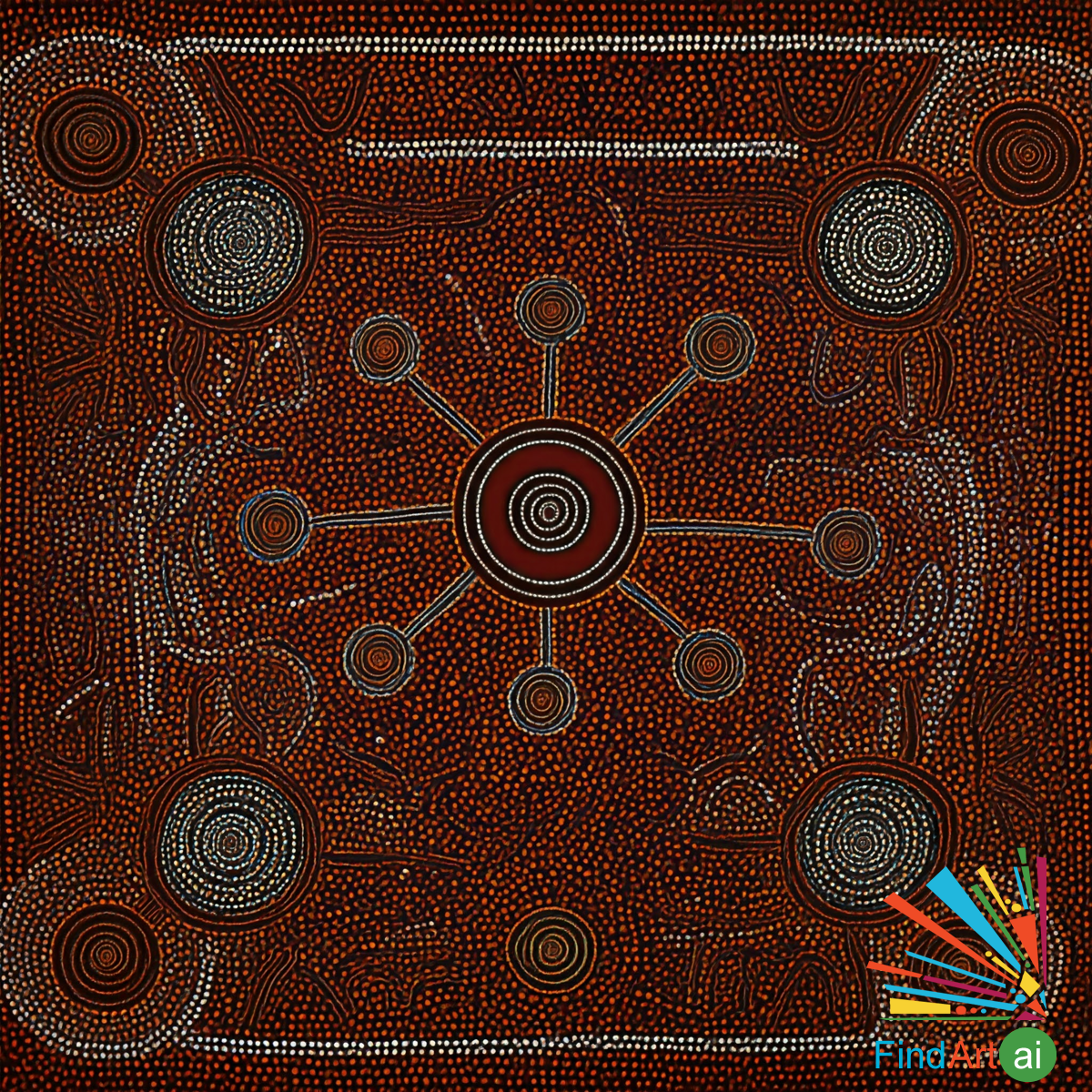Aboriginal Dot Painting
Aboriginal Dot Painting is a traditional art form developed by Indigenous Australian artists, particularly in the Central and Western Desert regions. This style uses intricate patterns made of dots to create vibrant, colorful images that convey cultural stories, spiritual beliefs, and connections to the land. Dot painting is rooted in the Dreamtime, the Indigenous Australian understanding of creation and existence.
Key Characteristics of Aboriginal Dot Painting
- Use of Dots
- The most defining feature of this style is the use of small, distinct dots made with acrylic paint. These dots create intricate patterns and images that can represent various subjects, including animals, plants, and landscapes.
- Symbolism and Meaning
- Each dot and pattern carries specific meanings, often linked to the artist's cultural stories and traditions. The artwork serves as a visual language that communicates the artist's connection to their land, ancestors, and spiritual beliefs.
- Example: Dots may represent tracks left by animals, waterholes, or other significant elements of the landscape.
- Cultural Narratives
- Dot paintings often tell stories from the Dreamtime, illustrating creation myths, ancestral beings, and cultural practices. The art serves as a way to pass down knowledge and traditions from generation to generation.
- Connection to Land
- Many dot paintings depict the artist’s relationship with their country, representing specific sites, events, or natural features. The artwork reflects an intimate understanding of the land and its significance.
- Example: Patterns may indicate the location of sacred sites, bush tucker, or water sources.
- Color and Composition
- Aboriginal Dot Painting is characterized by its vibrant color palette, often using natural pigments to create earthy tones, bright reds, yellows, greens, and blues. The colors chosen often reflect the landscape and elements of the artist's environment.
- The composition can range from highly detailed, intricate patterns to more abstract representations, depending on the artist's style and message.
- Technique and Tools
- Traditional dot painting techniques involve using simple tools like sticks, brushes, or even fingers to apply paint. The application of dots requires a steady hand and can be labor-intensive, creating a tactile quality in the artwork.
- Community and Collaboration
- Many Aboriginal artists work collaboratively in community settings, where they share knowledge and techniques. This collaboration reinforces cultural connections and collective storytelling.
Common Themes in Aboriginal Dot Painting
- Connection to Ancestors: Many works reflect the influence of ancestral beings and the stories they left behind, celebrating the ongoing relationship with past generations.
- Nature and Landscape: The depiction of the natural world is central, illustrating flora, fauna, and significant geographical features important to Indigenous culture.
- Dreamtime Stories: The art often narrates Dreamtime stories that explain the origins of the land, people, and their cultural practices.
Famous Aboriginal Artists
- Emily Kame Kngwarreye
- One of the most renowned Aboriginal artists, Kngwarreye's work features vibrant dots and patterns that convey her connection to the land and her cultural heritage.
- Geoffrey Gurrumul Yunupingu
- Known for his music, Yunupingu’s visual art also reflects his cultural roots and connection to the land, often using dot techniques to express his stories.
- Minnie Pwerle
- Pwerle's dot paintings explore themes of women's connection to the land and the significance of traditional knowledge and practices.
- Mervyn Rubuntja
- Rubuntja’s work incorporates traditional stories and symbols, using dots to create intricate patterns that reflect his heritage.
Aboriginal Dot Painting is a vibrant and meaningful art form that serves as a visual representation of Indigenous Australian culture, spirituality, and connection to the land. Through the use of dots and intricate patterns, artists convey stories from the Dreamtime and celebrate their heritage. This style not only preserves cultural narratives but also fosters community and collaboration among Indigenous artists.
Aboriginal Dot Paintings with Connection to Ancestors Theme
Aboriginal Dot Paintings with the Connection to Ancestors theme are sacred, symbolic representations...

